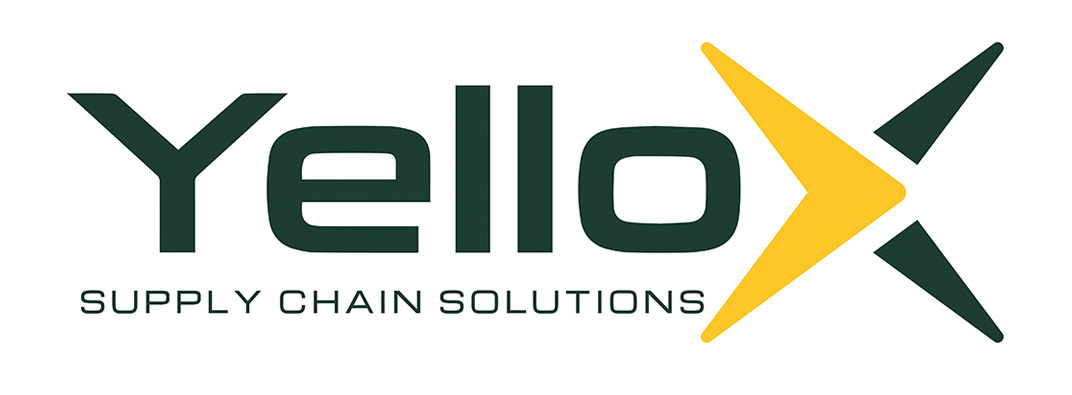OUR HISTORY
1910: The Journey Begins
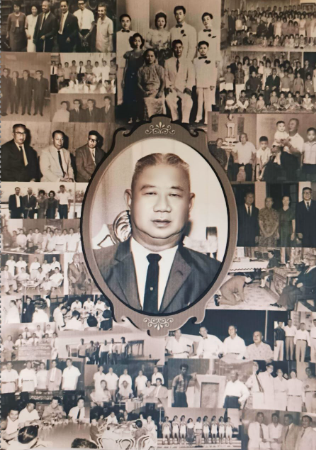 Don Carlos A. Gothong, the Imagineer.
Don Carlos A. Gothong, the Imagineer. 1915: A Bold Leap
Five years later, after working under Señor Genaro Liok in a humble sari-sari store and learning from fellow Chinese merchants, Don Carlos decided it was time to carve his own path.
For a few years, Don Carlos had been working as a salesman, which provided him a steady income to support himself in the Philippines. After gaining much experience, Don Carlos partnered with his friends, Genaro Liok and Chua Wan Sing, to open a sari-sari store in Polompon. This was a natural bond between friends who happen to also be good partners in business.
Don Carlos and Señor Genero’s partnership deemed lucrative enough for them to forge alliances with other traders and prompted them to delve into trading abaca and copra, which was gaining traction at that time.
Then finally, in 1915, he took a risk in opening his own shop in Palompon, Leyte. Though it was wonderful to work with friends, their common business maturity and motivation to move on to an independent business venture incited the duo’s decision to end the joint venture. This was the birth of Don Carlos’ entrepreneurial spirit, tempered by the values of honesty, integrity, and hard work. His reputation as a reliable businessman quickly spread, and his network began to grow.
1924–1925: A New Chapter
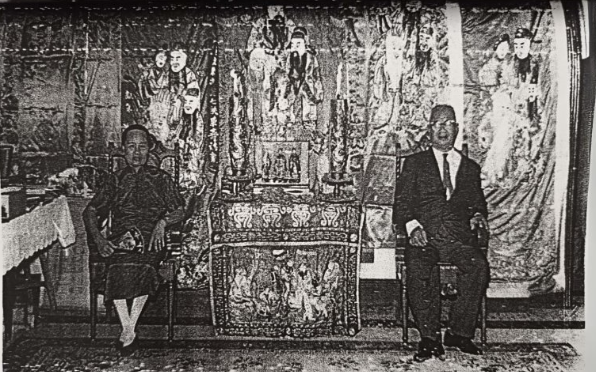 Doña Rita and Don Carlos post for a formal photo.
Doña Rita and Don Carlos post for a formal photo.
In 1924, fate led Don Carlos back to China, where he met Dee He Chiok, later known as Doña Rita Dee. The two had already been communicating through letters while he was still in the Philippines, with the efforts of Camilo, Don Carlos’ brother. After their marriage rites in China, the couple decided to return to the Philippines in 1925, where Don Carlos focused on expanding his business while Doña Rita nurtured their growing family, instilling in their children the Chinese values that would become the bedrock of their legacy.
1930s: Rising Against the Odds
The 1930s were a time of great triumph, but also of great adversity. Don Carlos expanded his general merchandise store and ventured into inter-island trade. Language was a barrier, but nothing could stop his drive to succeed. In 1937, he bought the M/V Ramses, a ship that marked the beginning of his maritime legacy. As Jefe de Viaje, he navigated the seas himself, braving the storms that threatened his journey. His network grew, built on years of trust and mutual respect with other Chinese businessmen in Cebu.
1935: A Fire Destroys Everything
In 1935, tragedy struck when Don Carlos’ store was engulfed in flames, leaving his family with nothing but ashes. This unforeseen calamity devastated him, but it didn’t extinguish his resolve. Instead, it strengthened his confidence in a secure and prosperous future. Ever faithful, he believed that no step could be taken without heaven’s guidance.
Life became unbearably difficult. Alfredo, Don Carlos’ eldest son, recalled the first three days after the fire, when the family relied on a neighbor’s generosity, surviving on sweet yam leaves to stave off hunger.
Rebuilding Trust: The Power of Palabra de Honor
 Palabra de honor stemmed from Don Carlos and his integrity and trustworthiness.
Palabra de honor stemmed from Don Carlos and his integrity and trustworthiness.
Despite the tragedy, Don Carlos’ reputation for honesty and integrity remained intact. Determined to start anew, he traveled to Cebu to inform his bankers and suppliers of his misfortune. Without hesitation, he borrowed money to rebuild and secured merchandise from trusted friends, including Go Occo and Company, Popeng Bazaar, and People’s Commercial. His palabra de honor—the value of keeping one’s word—inspired confidence among his peers. They extended goods and credit without collateral, knowing he would repay them as soon as he could. Don Carlos’ cheques, preferred even over cash in rural areas, became a symbol of trustworthiness.
Naval, Leyte: A Fresh Start
Don Carlos relocated to Naval, Leyte, and opened a new general merchandise store. His business flourished, quickly yielding enough profits to repay his debts. With unrelenting energy, he expanded into baking and rice and corn milling, demonstrating his entrepreneurial versatility.
1937: The Vessel Lux
In the midst of this success, Don Carlos acquired another vessel, the Lux, to support his growing business. The ship became essential for trading abaca, copra, and general merchandise, further enhancing his ventures.
1939: A Lesson in Thrift
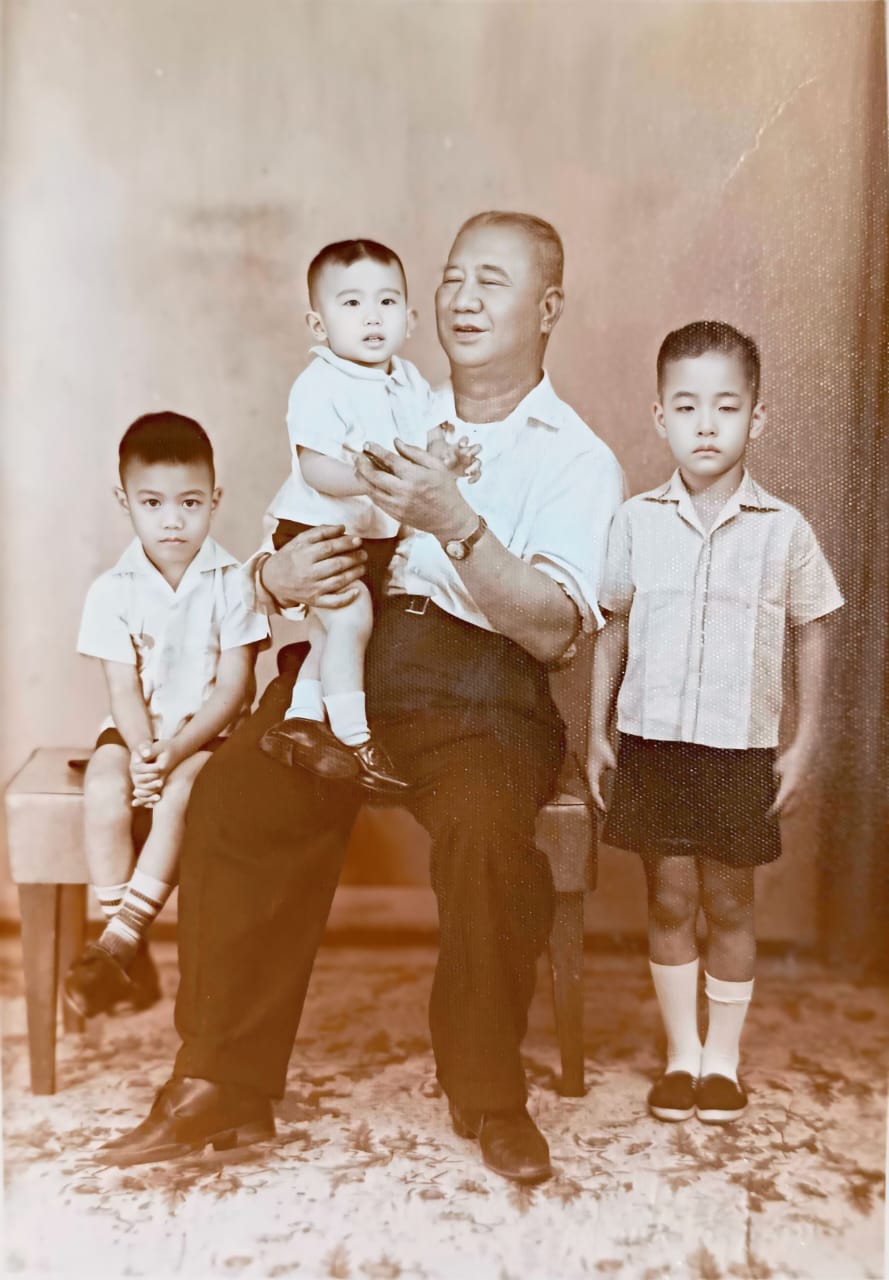 Don Carlos poses for a photo with his grandsons (from left) Bob, Benjamin, and Bowen.
Don Carlos poses for a photo with his grandsons (from left) Bob, Benjamin, and Bowen.
By 1939, Don Carlos sent his sons Alfredo and Alfonso, along with their cousin Enrique, to study in Cebu. Alfredo vividly remembered meeting his father at Pier 3 for his weekly allowance of 20 centavos. Curious, Alfredo once asked why Don Carlos walked to his appointments instead of spending 5 centavos on a tartanilla ride. His father’s response left a lasting impression: “Fred, if you earn one peso, you should save 90 centavos and spend only 10.” These words became a guiding principle for Alfredo and future generations.
1941: War and Sacrifice
During the Japanese occupation of Leyte, a 5,000-man force took control, establishing garrisons in major towns, disrupting commerce, and imposing strict controls on economic activities. Traders like the Gothong family suffered as the Japanese embargoed vessels and confiscated warehouses. Carlos Go Thong, refusing to let the enemy use his resources, scuttled MS Lux in the Caraycaray River.
Despite the chaos, Don Carlos continued small-scale trading to provide for his family. His son, Alfredo, and his younger brother, Sulpicio, supported him by peddling essential goods like sugar and rice in nearby barrios.
Alfredo also worked tirelessly at a very young age of 13, gathering water from a deep well at least 20 times a day, and planting vegetables to sustain the family.
1942: Trials and Perseverance
Despite finding relative safety in Bantayan, Don Carlos and his family were not completely spared from the war. He narrowly escaped execution thanks to Bantayan mayor Isidro Escario’s intervention and was later summoned by Japanese authorities to answer accusations of aiding guerrillas. His brother, Sulpicio, volunteered to go in his place and was nearly executed in Naval, only surviving with the help of local residents.
Life in Sulangan was harsh, with strict Japanese controls limiting trade to barter and black-market dealings. Carlos engaged in buy-and-sell with a local woman, while Sulpicio and his nephews, Don Carlos’ sons Alfredo and Alfonso, peddled essentials. Despite hardships, they remained generous, risking his life to share food and supplies with others.
A Community Celebrates Amidst Fear
While the family was trying to start a new life and better living in Daan Bantayan, rumors of Japanese assaults and aggression pervaded all over the small town. The rumors, however, remained to be just rumors for some time, until Carlos’ natal day came.
In Daan Bantayan, the family celebrated Don Carlos’ birthday with the entire barrio, roasting 20 pigs in a festive atmosphere. Tragically, Japanese soldiers raided the town that very day. The family and townsfolk fled into the mountains, leaving their feast behind.
1945: Liberation and Recovery
With General MacArthur’s forces liberating Leyte in 1945, hope returned. Don Carlos salvaged the Lux and resumed operations, seizing new opportunities as the economy rebounded.
Relating to this incident, Bob D. Gothong, Carlos’ grandson, admiringly credits Sama Go, a skilled artisan, who did not only see to the scuttling of the boat but its successful refloating after the war. A village mate and kinsman in China, Samuel (Sama) Go had joined Carlos in Leyte and was invaluable in shipping since, though he did not have the formal training, he was naturally gifted in handling and operating machineries.
The war had instilled in Don Carlos a deeper appreciation for life and reinforced his vision of building a national chain of stores and expanding into new markets.
After World War II
Late 1940s
Don Carlos expanded his fleet by purchasing two freight ships for a bargain price of P20,000. Despite being damaged, he and his nephews repaired and reconfigured the vessels, making one operational by transferring its engine and stabilizing it with water tanks. This ingenuity laid the foundation for further growth in the shipping business. Despite his success, Don Carlos never forgot his early struggles. His growing social awareness led him to address the lack of education in the country. Observing that only the elite were educated, he decided to contribute to building schools in various cities across the Philippines. Don Carlos believed that education was the one wealth that could never be taken from anyone.
1950s
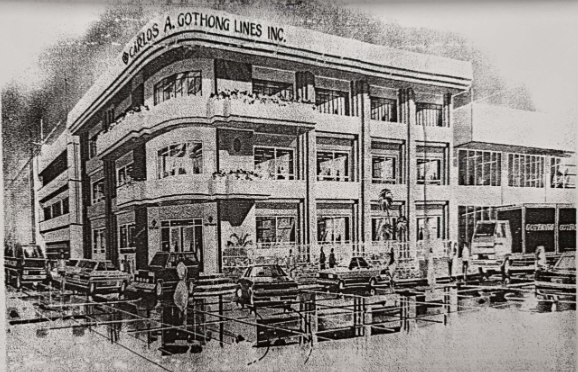 The Cebu office of Carlos A. Gothong Lines Inc.
The Cebu office of Carlos A. Gothong Lines Inc.
1960s: Expanding into Global Shipping
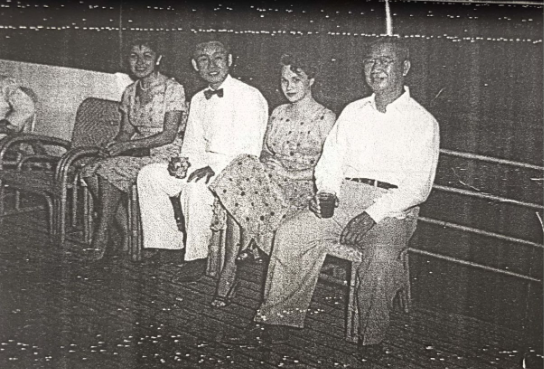 Photo taken during the blessing of MV Doña Conchita. Far right is Don Carlos, while second from the left is Cayetano Ludo, the owner of the biggest oil mill in Asia, the Ludo and Luym Corp.
Photo taken during the blessing of MV Doña Conchita. Far right is Don Carlos, while second from the left is Cayetano Ludo, the owner of the biggest oil mill in Asia, the Ludo and Luym Corp. Late 1960s: The First International Vessel
 The MV Doña Conchita, the first vessel lengthened by 40 feet by the Bataan National Shipyard.
The MV Doña Conchita, the first vessel lengthened by 40 feet by the Bataan National Shipyard. Alfredo's Efforts in Taiwan and Japan
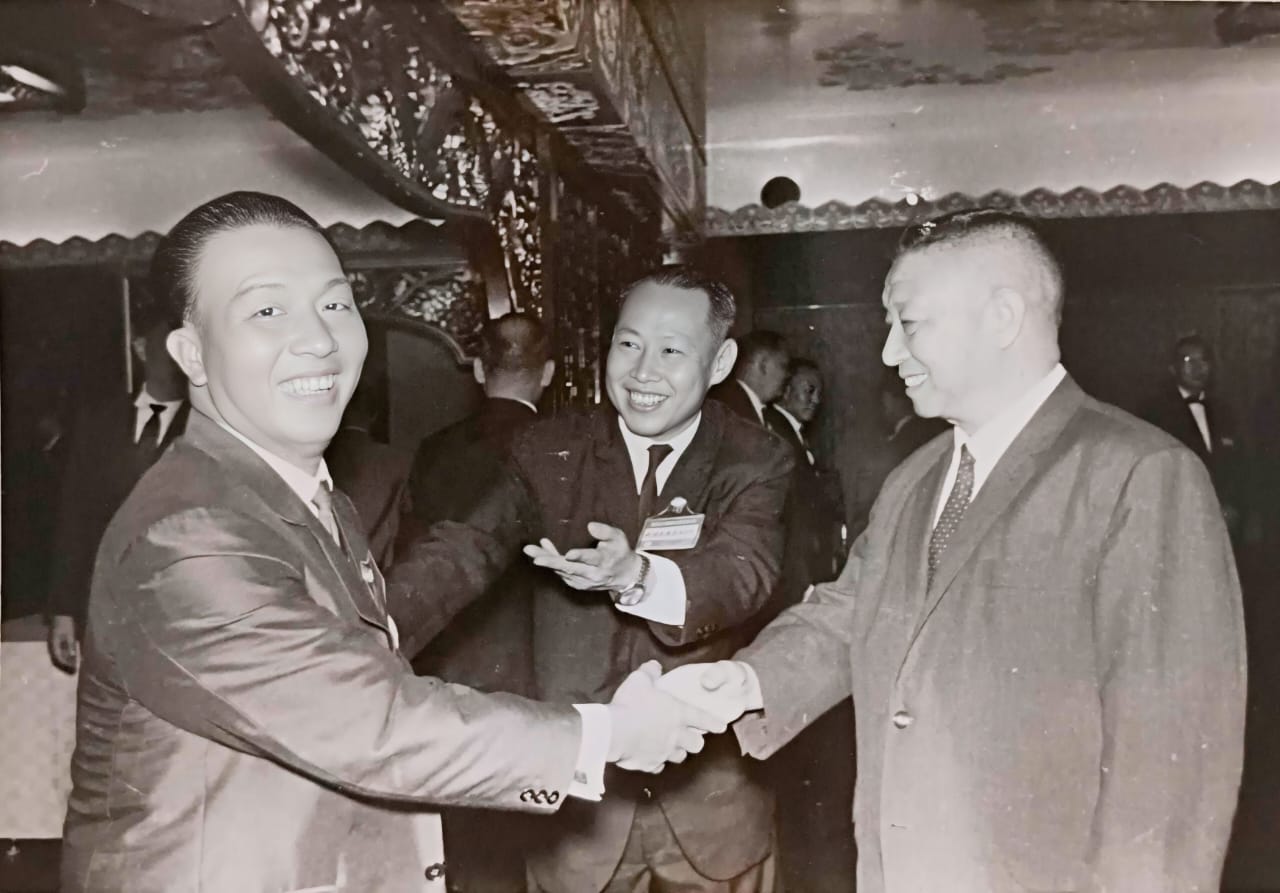 Don Alfredo’s warm handshake between friends and business associates.
Don Alfredo’s warm handshake between friends and business associates.
Expansion and Monitoring
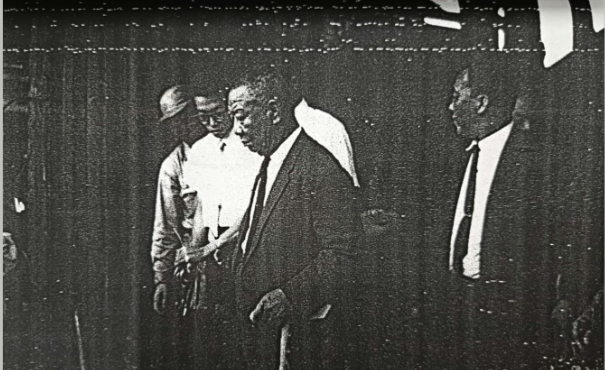 Don Alfredo following Don Carlos’ footsteps, taking all that he has learned from him as he makes his own waves.
Don Alfredo following Don Carlos’ footsteps, taking all that he has learned from him as he makes his own waves. 1966: The Death of Don Carlos
The Wake and Funeral
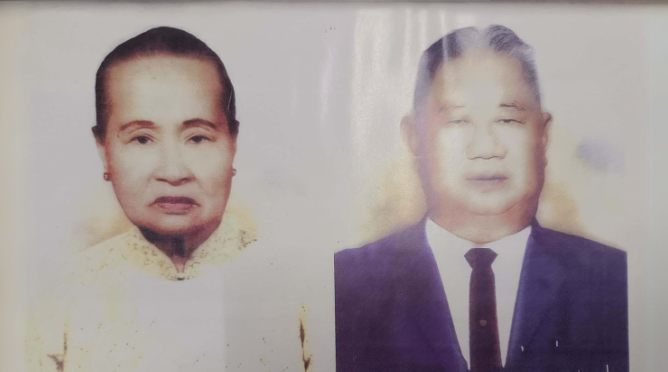 Doña Rita and Don Carlos.
Doña Rita and Don Carlos.
The wake was attended by prominent figures, including the Speaker of the House, Senate President, and President Ferdinand E. Marcos, who sent a heartwarming telegram. Thousands of people, including around 5,000 families and friends, expressed their condolences. Don Carlos was buried at the Chinese Cemetery on March 24, 1966, where around 3,000 people came to mourn his loss. Doña Rita, the family matriarch, joined Don Carlos in eternal rest on the evening of November 16, 1984.
Aftermath
Don Carlos’ death posed a great challenge for the family, particularly in continuing the business and fulfilling the country’s demands for efficient service.
1971: A Change of Direction
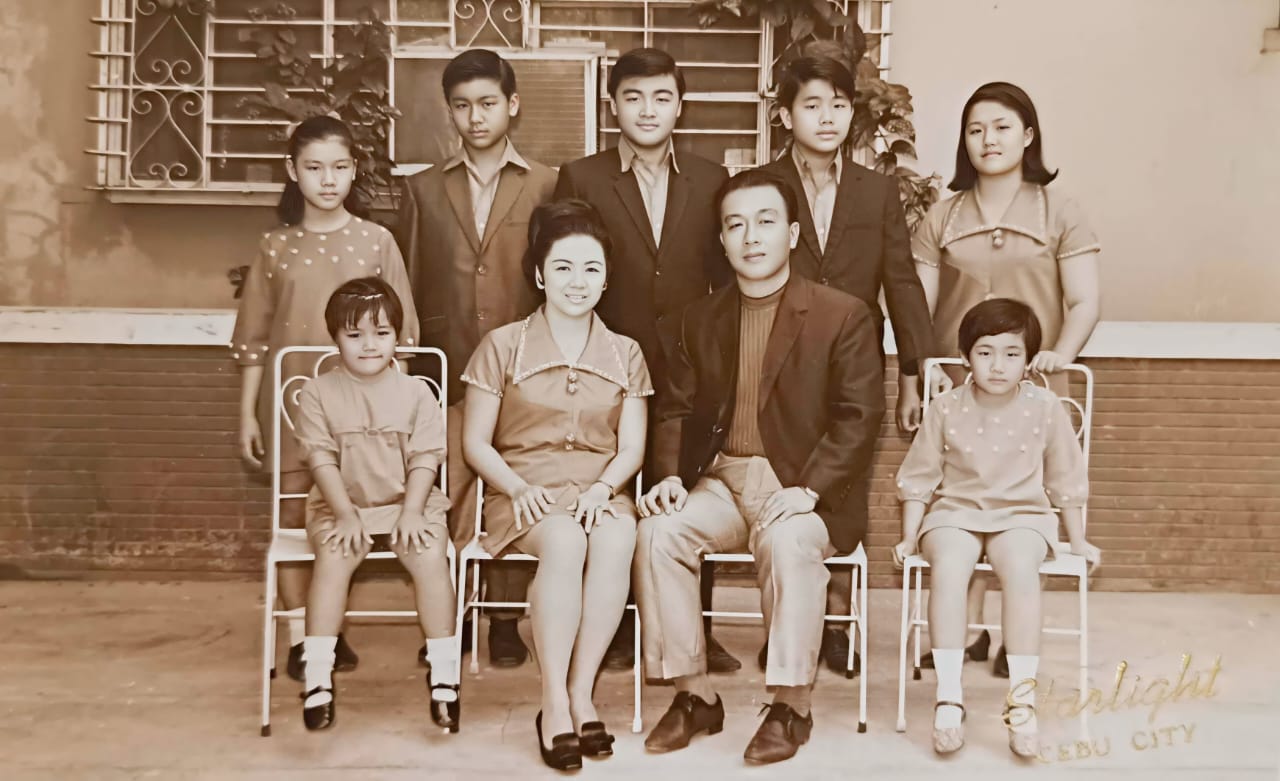 Don Alfredo and Doña Conchita (center) with their 7 children: (seated) Birdie, Brezilda, (standing) Brenda, Benjamin, Bowen, Bob, Betty.
Don Alfredo and Doña Conchita (center) with their 7 children: (seated) Birdie, Brezilda, (standing) Brenda, Benjamin, Bowen, Bob, Betty.
In 1971, Alfredo sought a better environment for his family due to the growing drug epidemic in the Philippines. Concerned for his children’s future, he traveled to several countries before deciding that Canada was the ideal place. The country’s development and its people’s simple, happy lives made a strong impression on him. Alfredo applied for migration, and in just one month, his application was approved. The family settled in Vancouver, Canada, from 1971 to 1984, raising a new generation of dynamic, business-minded children. Alfredo continued to manage his business in the Philippines while overseeing his family’s new life in Canada.
1972: The Division of the Company
In 1972, Sulpicio pulled out to create Sulpicio Shipping Lines, and Lorenzo also started Lorenzo Shipping Lines, maintaining a partnership with the original company. By September 1, 1972, Carlos A. Gothong & Co. was left with only six vessels.
1973: Building the Future
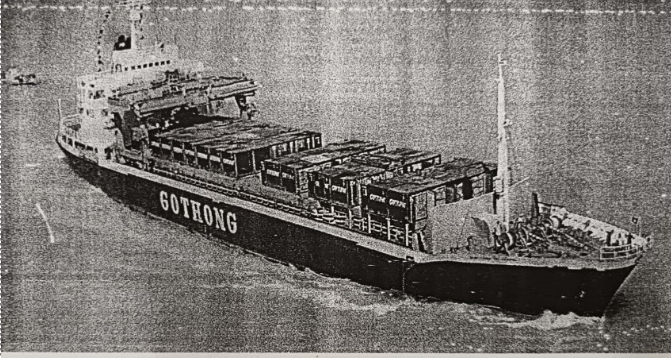 MV Our Lady of Peace, a gantry crane vessel that was the first in the Philippines.
MV Our Lady of Peace, a gantry crane vessel that was the first in the Philippines.
1974-1979: Economic Challenges and Crisis
 Joining a private conference with former President Ferdinand Marcos is Don Alfredo (seated far left).
Joining a private conference with former President Ferdinand Marcos is Don Alfredo (seated far left). Between 1974 and 1979, the Philippines faced an economic crisis, marked by rising oil prices and financial hardship for the company. The company struggled to pay off loans, and in 1978, Lorenzo Shipping Lines fully separated from the company. Alfredo now had to manage Carlos A. Gothong Lines, Inc. on his own, facing severe financial setbacks. Gross revenue dropped to just 25 million pesos in 1978. Further complications arose when key stakeholders withdrew their shares. Additionally, a group of family members holding a significant portion of the company’s assets also decided to exit. By the end of the year, the company had lost 57% of its assets, placing it in a precarious situation.
The RORO Discovery
On trips to Canada, Alfredo D. Gothong was inspired by Roll-on Roll-off (RORO) vessels that efficiently carried passengers and vehicles. Seeing their potential, he envisioned bringing this innovation to the Philippines to transform logistics operations.
At the time, manual freight loading required 60 workers to load 200 sacks of rice per hour, often leading to inefficiencies and delays. Determined to streamline operations, Alfredo introduced the country’s first RORO vessel in 1978 through Carlos A. Gothong Lines, Inc.
The impact was revolutionary: with RORO technology, 2,000 sacks could be loaded in an hour using just a forklift and six workers. The company’s first vessels—M/V Doña Josefina, M/V Don Calvino, and M/V Doña Lili—significantly boosted efficiency. By 1982, two more vessels, M/V Doña Cassandra and M/V Don Benjamin, joined the fleet, with Don Benjamin earning national recognition.
This innovation marked a turning point, driving growth and operational excellence.
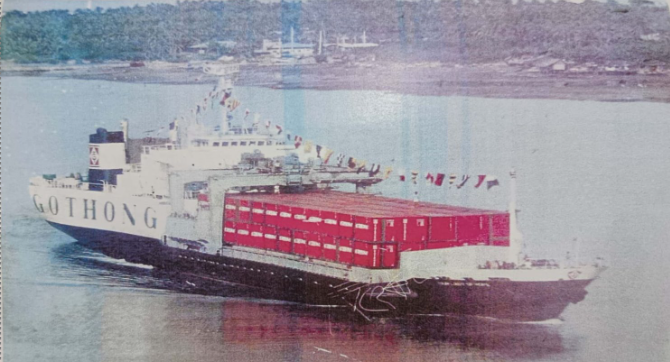 A glimpse of the MV Our Lady of Hope, the first RORO and gantry operated freight vessel in the Philippines.
A glimpse of the MV Our Lady of Hope, the first RORO and gantry operated freight vessel in the Philippines.
In the 1970s, Alfredo’s eldest son, Bowen, graduated with a Commerce degree in Canada and returned home to assist in the family shipping business. Starting with waterfront operations, he became Shipping Manager in 1975 and later the overall manager. Bob, the second son, also graduated with a degree in Commerce Major in Transporation and Utilities and a Minor in Finance from Canada and joined the business, initially handling bills of lading and office work before becoming Shipping Manager. In 1978, Benjamin, the third son, earned a Mechanical Engineering degree and was appointed Head of the Machinery Shop, overseeing vessel repairs and maintenance. In 1985, Alfredo’s sons took over, continuing the legacy of progress.
The Turning Point
The Gothong fleet grew, transforming sea travel through its continuous improvement, prioritizing customer satisfaction, quality, safety, and social responsibility.
The launching of M/V Our Lady of Akita in 1993 elevated sea travel beyond mere transportation, turning it into a unique, fun-filled, and comfort-laden experience. Passengers and guests would say, “M/V Our Lady of Akita is the most lavish lady.” This sentiment reflected the company’s genuine commitment to enhancing the sailing experience, which was embodied in its official slogan at the time: “Sailing Your Way.”
Carlos A. Gothong Lines (CAGLI) was ranked among the Top 500 Corporations of the Philippines and earned numerous awards for excellence. The company was also a pioneer in automating freight and ticket sales, introducing computers to all employees to enhance work efficiency. This was pioneered by Brenda Gothong, Don Alfredo’s daughter. It was during the documentation of policies and procedures that the value of workplace computing became evident, especially when multiple iterations of documents were needed.

“Saling Your Way” was MV Our Lady of Akita’s official slogan, which reflects the company’s genuine commitment to enhancing the sailing experience.
In addition, CAGLI was the first shipping company to introduce the concept of stewardesses to assist passengers boarding Our Lady of Akita, further enhancing customer service. Don Carlos A. Gothong’s vision of a better world led to the company’s success. In 1993, he was honored as one of Cebu’s Great Cebuano Awardees, and in 2000, he was named “Shipping Magnate” by Sun.Star Daily and recognized among the “100 Most Notable Cebuanos of the Century.”
The Legacy Continues (1997 - Present)
The underlying economic conditions in the mid 1990’s made Carlos A. Gothong Lines, Inc. steer towards a new direction as it merged with William Lines, Inc. and Aboitiz Shipping, Inc. to form the mega-corporation, WG&A, Inc. in 1996.
With all their powers combined, the shipping business tie-up proved to be a very good move as it had flourished more in its quality service to the growing public both for the passengers and for the shippers alike.
Following the merger in the mid-1990s, the company transitioned back to its roots as Carlos A. Gothong Lines Inc., reemerging as a holding entity focused on diversification. 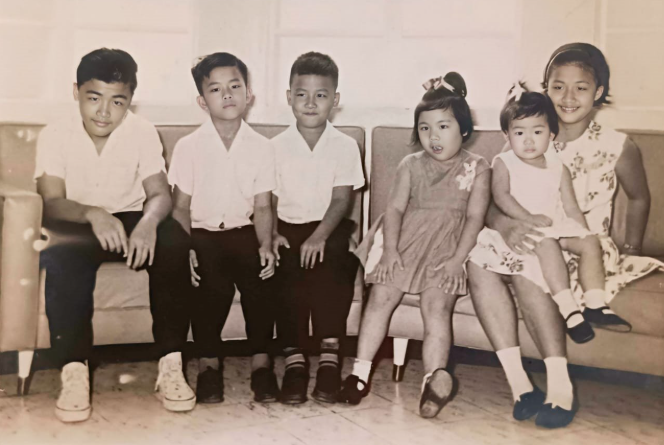
The Gothong legacy continues from Don Alfredo’s brood (from left to right: Bowen, Bob, Benjamin, Brenda, Brezilda, and Betty).
In late 1996, Bob D. Gothong founded Ottawa Freight to provide employment opportunities for those displaced by the merger of WG&A. This initiative reflected the company’s unwavering commitment to community resilience and innovation. By January 6, 2005, Gothong Southern Shipping Lines Inc. was born, bringing the legacy full circle with the launch of the vessel Don Carlos A. Gothong Sr. (DCAG). This milestone honored the visionary immigrant whose dream continues to thrive in the ships that bear his name and the company he built. From 2020 to 2024, Gothong Southern underwent significant transformations. In 2020, amid the challenges of the pandemic, the company rebranded as Gothong Southern Shipping, setting its sights on becoming a world-class, fully digital shipping enterprise in the Philippines. By 2022, the brand evolved into Gothong Southern Freight, a provider of seamless integrated logistics solutions.
Gothong Southern
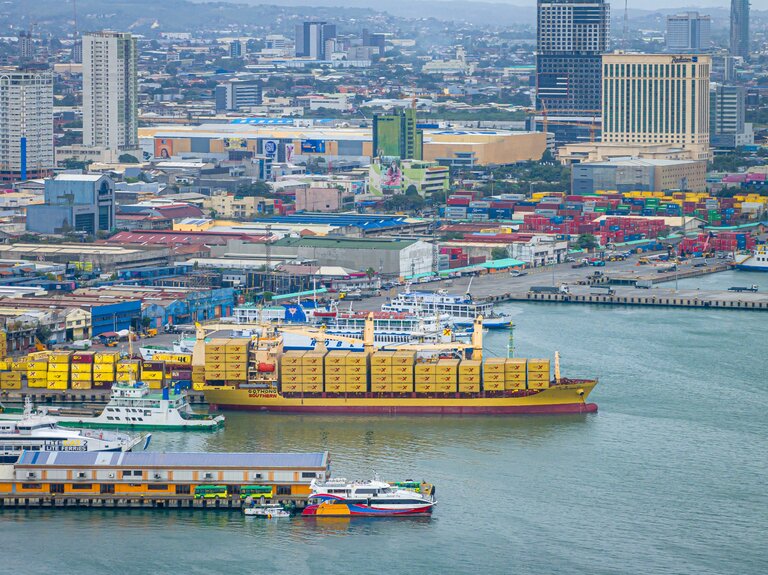 Don Carlos and Don Alfredo’s expertise, values, and legacy continues on with Gothong Southern, now with Bob D. Gothong at the helm stirring his 600-bodied company into bigger oceans.
Don Carlos and Don Alfredo’s expertise, values, and legacy continues on with Gothong Southern, now with Bob D. Gothong at the helm stirring his 600-bodied company into bigger oceans.
In 2024 and beyond, we proudly stand as Gothong Southern—a symbol of our journey beyond traditional freight into integrated logistics and business solutions. This evolution emphasizes our commitment to innovation, speed, and customer-centric excellence. Our rebranding resonates with both established and new customers, reaffirming our role as a trusted partner in business growth through transport and supply chain and a pioneer in shaping the future of logistics in the Philippines. We are Gothong Southern – Transport, E2E Supply Chain, and Business Solutions.

Don Carlos A. Gothong Port Centre, Quezon Blvd., Pier 4, Cebu City.


